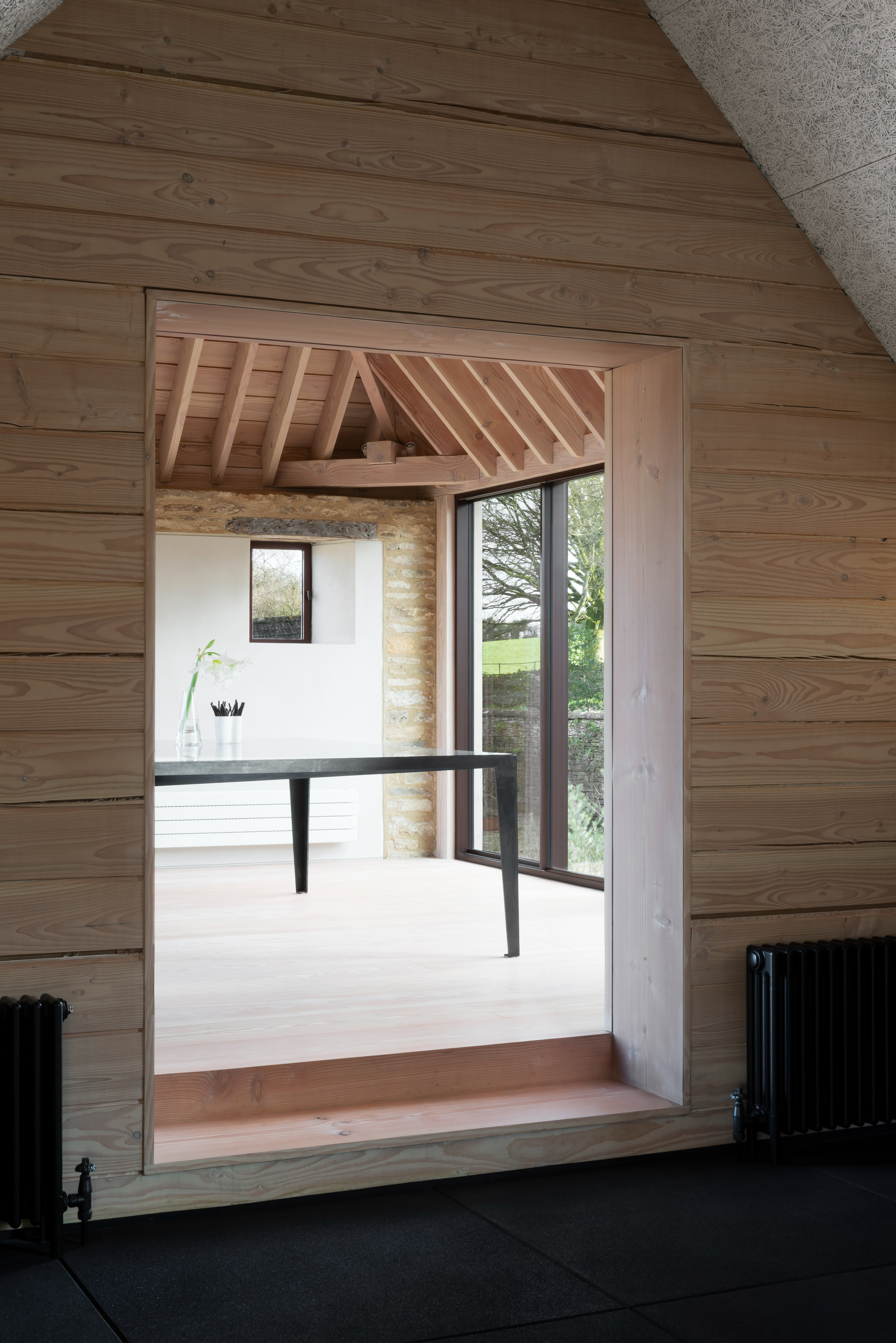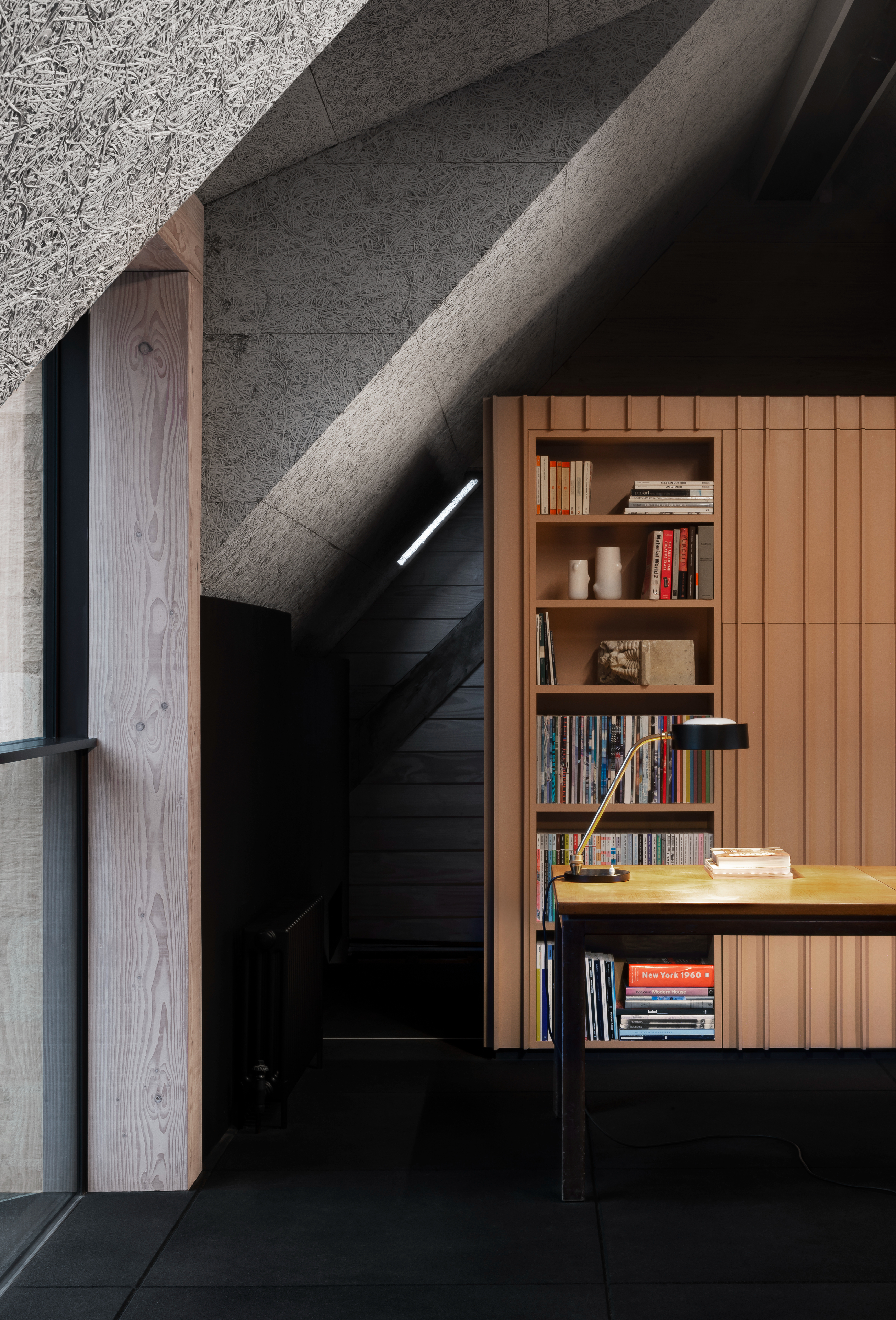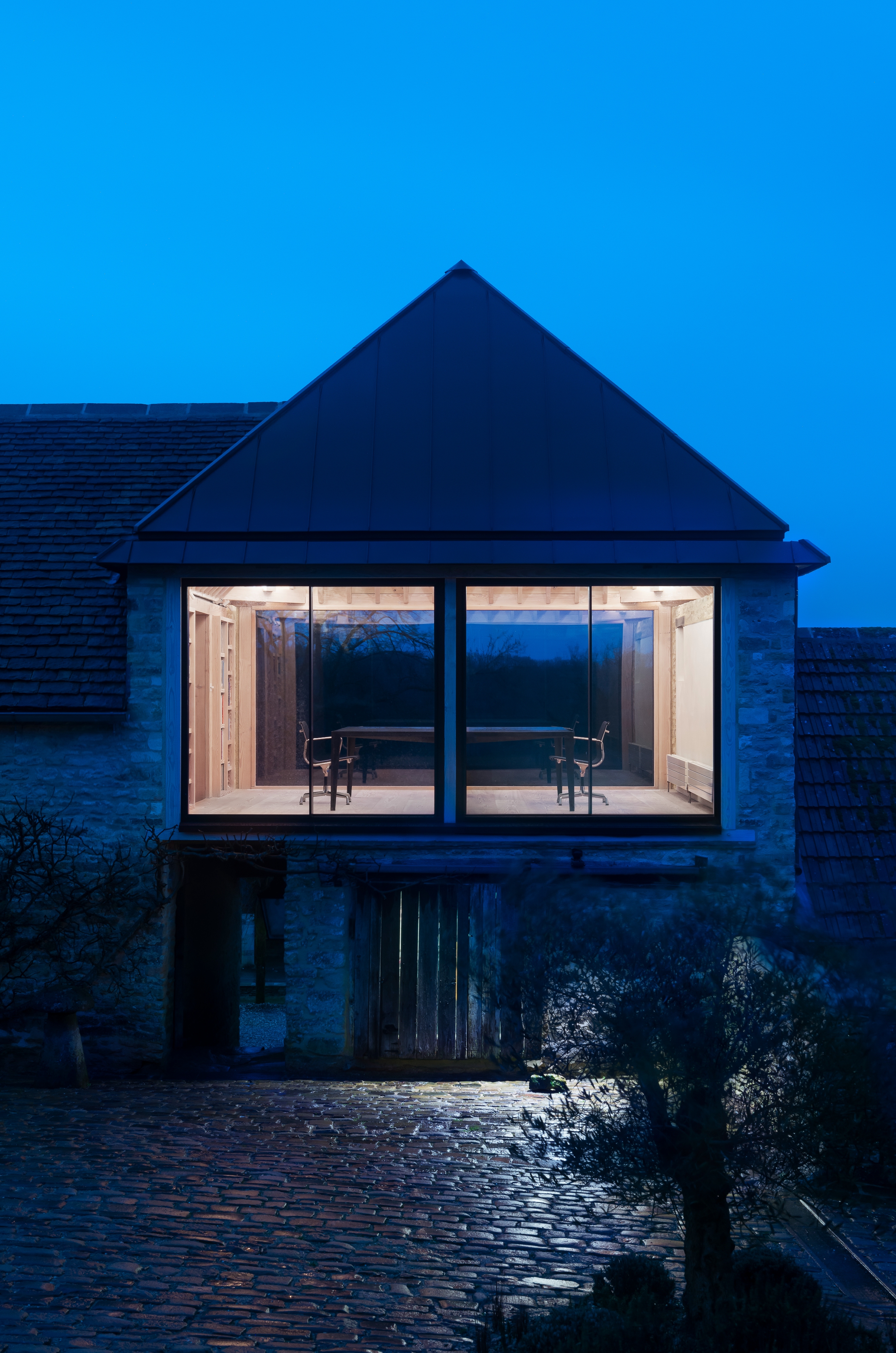Architect Richard Parr perfects working from home with his Cotswolds office extension
Cotswolds-based architect Richard Parr has converted a 19th century agricultural building into a modern studio addition for his practice, which is located in the countryside next to his home, in Easter Park Farm
Gilbert McCarragher - Photography

When architect Richard Parr moved to the Cotswolds 15 years ago, to live and set up his studio and workspace, it was a pretty radical move. However, he only saw advantages, such as eliminating his commute, getting more space for his money, spending more time with his family, and being closer to nature and a more sustainable way of living. His bet paid off big, not least now, when we all find ourselves working from home and juggling work and family life on a different level entirely.
Parr, a working-from-home veteran now, has in fact just completed a new extension to his countryside studio – the conversion of a 19th century agricultural barn on his property. His original studio contained eight workstations, occupying buildings that were formerly a hayloft, cow shed, dairy barn and a bull pen. The new addition offers valuable extra space to the small but dynamic practice in what was a grain loft, one of the last remaining buildings to be converted on the estate.
‘My life is my work, I enjoy living the way I design for other people, so why separate it? This is also a testing ground for ideas,' says Parr, who admits that some infrastructure work was needed before everything could work smoothly. ‘Fast broadband throughout has made it all work as well. Investment was needed and I brought in fibreoptic some years back.'
The ground floor contains an entrance with informal client meeting space and breakout room; the upper level houses workspace and a timber pod containing a shower room and kitchen. The colour palette ranges from neutral, natural colours (such as the exposed wood), to darker tones, and original materials, such as the old rustic stone walls, sit effortlessly side by side with recycled rubber flooring, a ceiling comprised of wood wool panels and raw plaster paint colour.
The composition even contains a wooden panelled wall, handmade by Berthold Lubetkin and rescued from a farmhouse in a neighbouring village where the Modernist architect once stayed. This mixing of old and new is a challenge Parr relished: ‘What you start with is a character, what you have to end up with is an enrichment and projection of that character into the future. It’s also a balance, too much of either can kill the other. Both need to live and exist with a certain tension.'
And now that he's added the latest element to his work/life campus, is there anything he'd do differently? ‘I would have done more extensive groundwork and landscaping at the outset,' he says. ‘I have done masses but it is a long term process and life is short.'





INFORMATION
Receive our daily digest of inspiration, escapism and design stories from around the world direct to your inbox.
Ellie Stathaki is the Architecture & Environment Director at Wallpaper*. She trained as an architect at the Aristotle University of Thessaloniki in Greece and studied architectural history at the Bartlett in London. Now an established journalist, she has been a member of the Wallpaper* team since 2006, visiting buildings across the globe and interviewing leading architects such as Tadao Ando and Rem Koolhaas. Ellie has also taken part in judging panels, moderated events, curated shows and contributed in books, such as The Contemporary House (Thames & Hudson, 2018), Glenn Sestig Architecture Diary (2020) and House London (2022).
-
 Terrified to get inked? This inviting Brooklyn tattoo parlour is for people who are 'a little bit nervous'
Terrified to get inked? This inviting Brooklyn tattoo parlour is for people who are 'a little bit nervous'With minty-green walls and an option to 'call mom', Tiny Zaps' Williamsburg location was designed to tame jitters
-
 Let’s hear it for the Chopard L.U.C Grand Strike chiming watch
Let’s hear it for the Chopard L.U.C Grand Strike chiming watchThe Swiss watchmaker’s most complicated timepiece to date features an innovative approach to producing a crystal-clear sound
-
 Form... and flavour? The best design-led restaurant debuts of 2025
Form... and flavour? The best design-led restaurant debuts of 2025A Wallpaper* edit of the restaurant interiors that shaped how we ate, gathered and lingered this year
-
 Arbour House is a north London home that lies low but punches high
Arbour House is a north London home that lies low but punches highArbour House by Andrei Saltykov is a low-lying Crouch End home with a striking roof structure that sets it apart
-
 A former agricultural building is transformed into a minimal rural home by Bindloss Dawes
A former agricultural building is transformed into a minimal rural home by Bindloss DawesZero-carbon design meets adaptive re-use in the Tractor Shed, a stripped-back house in a country village by Somerset architects Bindloss Dawes
-
 RIBA House of the Year 2025 is a ‘rare mixture of sensitivity and boldness’
RIBA House of the Year 2025 is a ‘rare mixture of sensitivity and boldness’Topping the list of seven shortlisted homes, Izat Arundell’s Hebridean self-build – named Caochan na Creige – is announced as the RIBA House of the Year 2025
-
 In addition to brutalist buildings, Alison Smithson designed some of the most creative Christmas cards we've seen
In addition to brutalist buildings, Alison Smithson designed some of the most creative Christmas cards we've seenThe architect’s collection of season’s greetings is on show at the Roca London Gallery, just in time for the holidays
-
 In South Wales, a remote coastal farmhouse flaunts its modern revamp, primed for hosting
In South Wales, a remote coastal farmhouse flaunts its modern revamp, primed for hostingA farmhouse perched on the Gower Peninsula, Delfyd Farm reveals its ground-floor refresh by architecture studio Rural Office, which created a cosy home with breathtaking views
-
 A revived public space in Aberdeen is named Scotland’s building of the year
A revived public space in Aberdeen is named Scotland’s building of the yearAberdeen's Union Terrace Gardens by Stallan-Brand Architecture + Design and LDA Design wins the 2025 Andrew Doolan Best Building in Scotland Award
-
 A refreshed 1950s apartment in East London allows for moments of discovery
A refreshed 1950s apartment in East London allows for moments of discoveryWith this 1950s apartment redesign, London-based architects Studio Naama wanted to create a residence which reflects the fun and individual nature of the clients
-
 In this Cotswolds home, drama meets minimalism
In this Cotswolds home, drama meets minimalismCotswolds home Hiaven house, with interiors designed by McLaren Excell, is a perfect blend of contemporary chic and calm, countryside drama